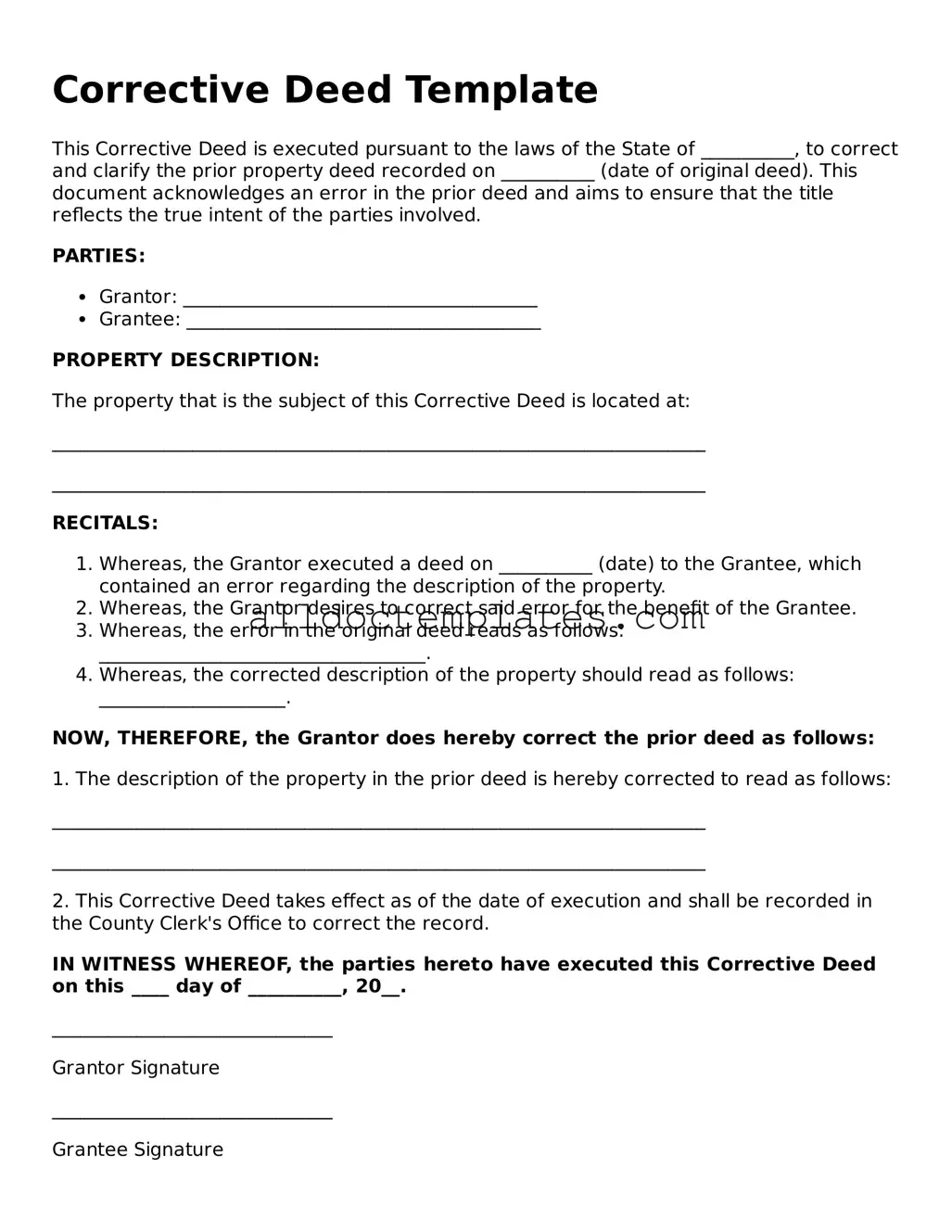Corrective Deed Template
This Corrective Deed is executed pursuant to the laws of the State of __________, to correct and clarify the prior property deed recorded on __________ (date of original deed). This document acknowledges an error in the prior deed and aims to ensure that the title reflects the true intent of the parties involved.
PARTIES:
- Grantor: ______________________________________
- Grantee: ______________________________________
PROPERTY DESCRIPTION:
The property that is the subject of this Corrective Deed is located at:
______________________________________________________________________
______________________________________________________________________
RECITALS:
- Whereas, the Grantor executed a deed on __________ (date) to the Grantee, which contained an error regarding the description of the property.
- Whereas, the Grantor desires to correct said error for the benefit of the Grantee.
- Whereas, the error in the original deed reads as follows: ___________________________________.
- Whereas, the corrected description of the property should read as follows: ____________________.
NOW, THEREFORE, the Grantor does hereby correct the prior deed as follows:
1. The description of the property in the prior deed is hereby corrected to read as follows:
______________________________________________________________________
______________________________________________________________________
2. This Corrective Deed takes effect as of the date of execution and shall be recorded in the County Clerk's Office to correct the record.
IN WITNESS WHEREOF, the parties hereto have executed this Corrective Deed on this ____ day of __________, 20__.
______________________________
Grantor Signature
______________________________
Grantee Signature
STATE OF __________
COUNTY OF __________
On the ____ day of __________, 20__, before me, a Notary Public, personally appeared __________________________________, known to me to be the person(s) described in and who executed the foregoing instrument, and acknowledged that they executed the same.
______________________________
Notary Public
My Commission Expires: ____________
